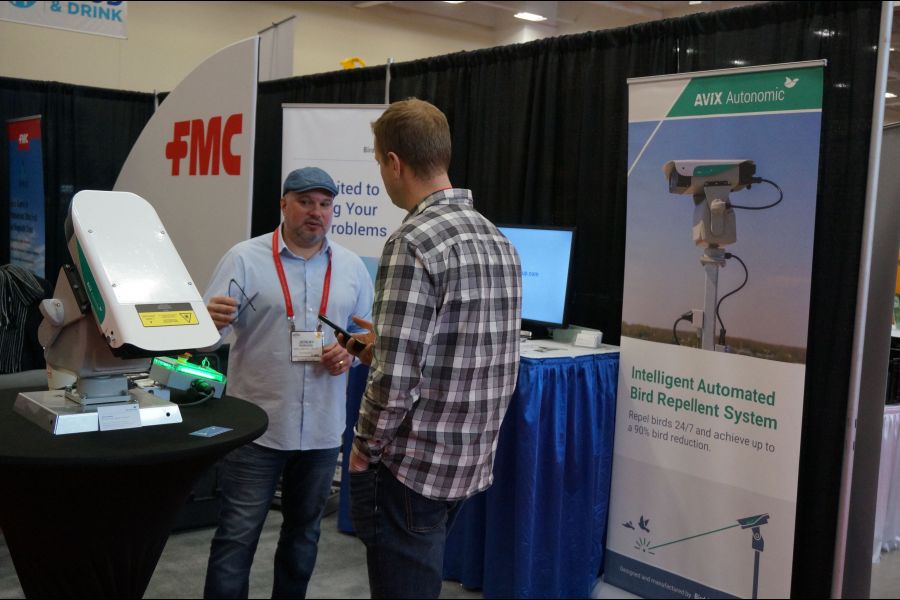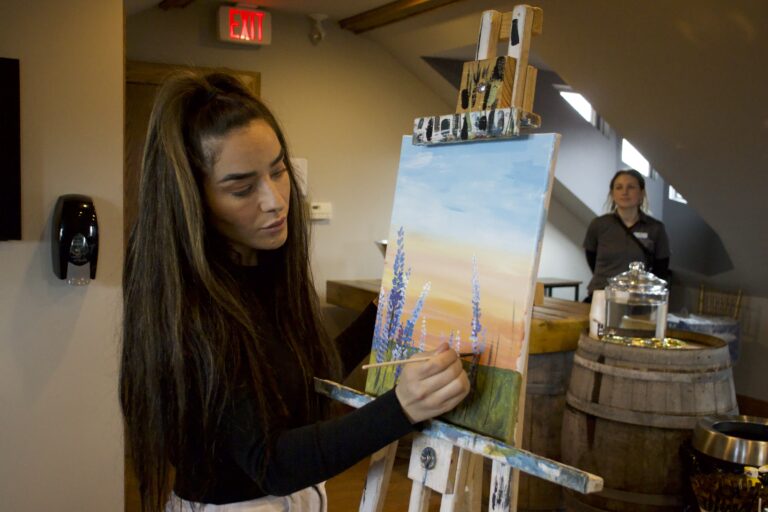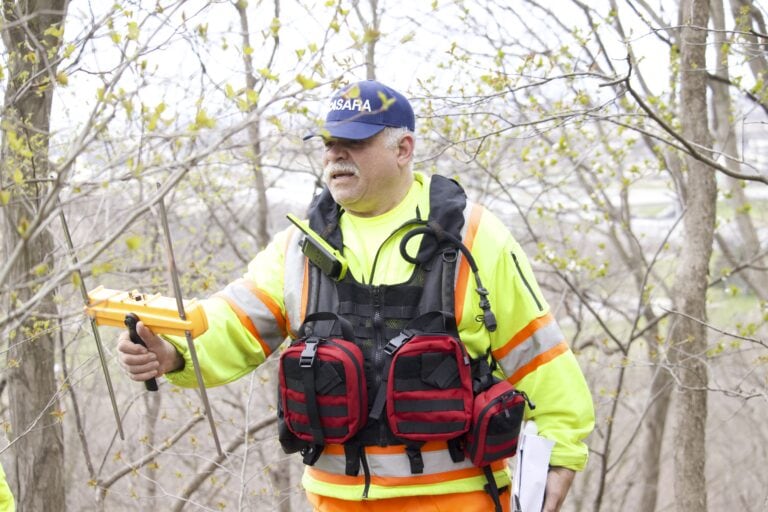An exhibit showcasing an automated laser unit designed to keep birds out of vineyards proved to be very popular at the Ontario Fruit and Vegetable Convention in Niagara Falls last week.
“It was the busiest show that I have ever done in my 20-plus years,” said Jeremy Perkins, a sales representative for Bird Control Group, a Dutch company that makes the laser unit. “I would expect that we will sell at least 25 or more units in Ontario this year.”
One grower from Niagara-on-the-Lake who talked to Perkins at the show said he’d seen articles about the laser in various farming magazines.
And while he is interested in the technology, the $10,000 U.S. pricetag might be hard to justify.
Bird bangers, also known as bird cannons, are commonly used to scare off birds and have long been a source of tension between Niagara grape growers and residents who complain about the noise.
Lee Kuhn, operations manager at Malivoire Wine in Beamsville, went to the show and bought two units to install.
“We like to be innovators,” he said. “We saw them in use in Oregon and California when we were there, and talked to people that have them, and they seem exceptional.”
“We do a lot of netting, and it’s extremely costly. It can be up to $1,000 per acre, so for us, these units will pay for themselves in two years,” Kuhn said.
“We also use bird cannons and that upsets the neighbours, so we’re trying to stop. We’ll turn them off when we install the lasers, and hope the lasers work well right from the start,” he added.
Each laser machine can cover 20 acres.
The automated unit projects a green laser beam, which scares birds away.
“Birds see it differently than humans. We see it as a point of light, but birds see the whole beam. They perceive it as a solid object, like a stick of light, so they feel they’re under attack and they leave the area,” said Perkins. It’s like a light sabre coming at them and they perceive it as a threat.
“I’ve been in sales for 25 years. I’ve sold bangers and speakers with birds of prey sounds on them. There always comes a point when you have to move them or change something or update, because the birds get used to them. This is the first product that is the real deal,” said Perkins.
“They never get used to it, because we set multiple different patterns that constantly change.”
“To be effective, it’s really important to start using the laser at least two weeks before the grapes are ripe, and before birds have already started eating them,” he explained.
“Once birds are established in a vineyard, and they’ve tasted ripe grapes, it’s harder to move them after they have a reason to stay. You need to start before the fruit is ripe, and you train them that this area is protected.”
Growers who have used the laser as instructed have reduced the number of birds in their vineyards by as much as 90 per cent, according to Perkins.
The laser unit, which was initially used to keep birds from blueberry crops, was adopted by grape growers in the United States in 2018, and it’s popularity is on the rise.
“We’ve upped production three times since last year. The company is growing rapidly,” said Perkins.
Back at Malivoire, Kuhn is hoping the lasers work “at least as well as netting, and maybe even better.” He expects to get a lot of interest from other growers in Niagara, wanting to see it in action, and see how effective it is.
Kuhn plans to have the units, which will be solar powered, set up in the next few weeks, and turned on just as soon as there is the first hint of sweetness in the grapes. .
Next: How Lakeview Vineyard Equipment has grown to support innovation in the wine industry and create jobs in NOTL.










